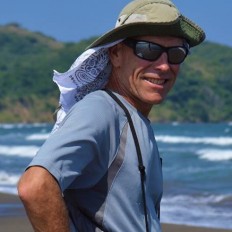The Arcata Marsh and Wildlife Sanctuary is productive for birding year-round, though June is probably the least interesting time. Shorebirds are present in the area in large numbers from July to April but their presence at the marsh is dependent on tides, with the several hours before and after high tide being the best. Waterfowl numbers peak from October to January. Most locations can be viewed from various angles, so sun position is not much of a factor.
The entire site can be covered easily on foot in half a day.
The best areas for waterfowl are the freshwater and brackish ponds and marshes: Butcher Slough Log Pond in the northeast corner; the three enhancement marshes on the west side; Klopp Lake in the southwest; Brackish, East, and West ponds in the northwest; and the oxidation ponds in the southeast.
Shorebirds congregate at high tide on the shoreline and islands of Klopp Lake and adjacent Arcata Bay, along South I Street between Klopp Lake and McDaniel Slough Restoration Area, in McDaniel Slough Restoration Area, and at Brackish Pond.
The Redwood Region Audubon Society leads free, guided bird walks at 8:30 on Saturdays starting in the northeast corner of the Klopp Lake parking lot; Google calls the spot "Arcata Bird Sanctuary."
The Arcata Marsh and Wildlife Sanctuary is productive for birding year-round, though June is probably the least interesting time. Shorebirds are present in the area in large numbers from July to April but their presence at the marsh is dependent on tides, with the several hours before and after high tide being the best. Waterfowl numbers peak from October to January. Most locations can be viewed from various angles, so sun position is not much of a factor.
The entire site can be covered easily on foot in half a day.
The best areas for waterfowl are the freshwater and brackish ponds and marshes: Butcher Slough Log Pond in the northeast corner; the three enhancement marshes on the west side; Klopp Lake in the southwest, Brackish, southwest; Brackish, East, and West ponds in the northwest; and the oxidation ponds in the southeast.
Shorebirds congregate at high tide on the shoreline and islands of Klopp Lake and adjacent Arcata Bay, along South I Street between Klopp Lake and McDaniel Slough Restoration Area, in McDaniel Slough Restoration Area, and at Brackish Pond.
The Redwood Region Audubon Society leads free, guided bird walks at 8:30 on Saturdays starting in the northeast corner of the Klopp Lake parking lot; Google calls the spot "Arcata Bird Sanctuary."
The Arcata Marsh and Wildlife Sanctuary is productive for birding year-round, though June is probably the least interesting time. Shorebirds are present in the area in large numbers from July to April but their presence at the marsh is dependent on tides, with the several hours before and after high tide being the best. Waterfowl numbers peak from October to January. Most locations can be viewed from various angles, so sun position is not much of a factor.
The entire site can be covered easily on foot in half a day.
The best areas for waterfowl are the freshwater and brackish ponds and marshes: Butcher Slough Log Pond in the northeast corner; the three enhancement marshes on the west side; Klopp Lake in the southwest, Brackish, East, and West ponds in the northwest; and the oxidation ponds in the southeast.
Shorebirds congregate at high tide on the shoreline and islands of Klopp Lake and adjacent Arcata Bay, along South I Street between Klopp Lake and McDaniel Slough Restoration Area, in McDaniel Slough Restoration Area, and at Brackish Pond.
The Redwood Region Audubon Society leads free, guided bird walks at 8:30 on Saturdays starting in the northeast corner of the Klopp Lake parking lot; Google calls the spot "Arcata Bird Sanctuary."


